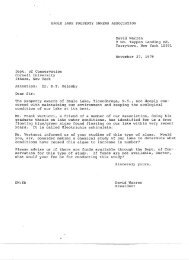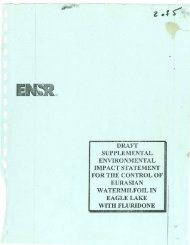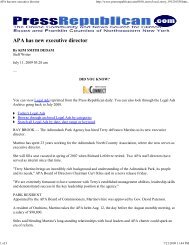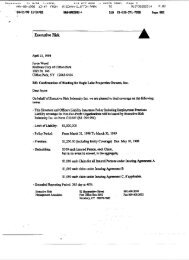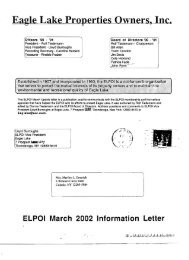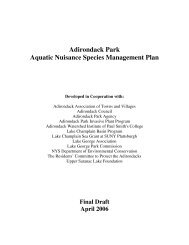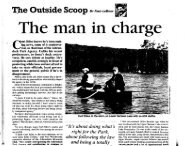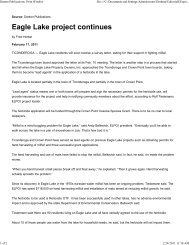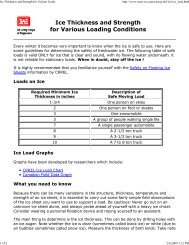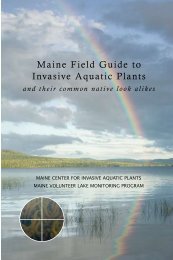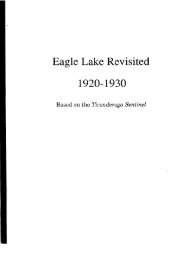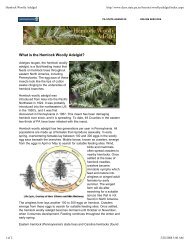Lake Hortonia 2008 - Eagle Lake Property Owner's Inc.
Lake Hortonia 2008 - Eagle Lake Property Owner's Inc.
Lake Hortonia 2008 - Eagle Lake Property Owner's Inc.
You also want an ePaper? Increase the reach of your titles
YUMPU automatically turns print PDFs into web optimized ePapers that Google loves.
generally been in the less common species, less than 2% frequency of occurrence, or in species<br />
represented in only one (9 species) or two (7 species) survey years. Six species were reported in<br />
the 2005 wetland survey for the first time; Brasenia schreberi, Polygonum sp., Potamogeton<br />
pusillus, Potamogeton zosteriformis, Ranunculus longirostris, and Typha sp. Nearly all are<br />
native species common to the region. No previously unreported species were encountered in<br />
2006, but Potamogeton robbinsii appeared in 2007 and <strong>2008</strong>. Eurasian watermilfoil abundance<br />
in the wetland transect increased substantially in 2003, more than double the greatest frequency<br />
previously reported in 2000. The dramatic increase in the abundance of Eurasian watermilfoil<br />
was accompanied by a decline in species richness (Figure 7). In 2004, Eurasian watermilfoil<br />
frequency of occurrence declined to 65% from the 2003 high of 78%. This decline continued in<br />
2005 and 2006, to 41% and 35% of survey points, respectively. A resurgence of Eurasian<br />
watermilfoil frequency of occurrence to 56% of survey points in 2007 and 70% of survey points<br />
in <strong>2008</strong> was observed.<br />
Total species richness in the Burr Pond wetland ranged from a high of 4.0 species per survey<br />
point in 2007 to a low of 2.1 species per survey point in 2003. In 2004 and 2005, total species<br />
richness was similar at 2.7 and 2.8 species per survey point, with a steady increase continuing in<br />
2006 and 2007. Native species richness also declined sharply from a high of 3 species per<br />
sample in 2000 to a low of 1.3 species per sample in 2003. In 2004, native species richness was<br />
2.1 species per survey point and this increase continued in 2005 through 2007, with 2.4, 2.8 and<br />
3.4 species per survey point, respectively. Declines in native species richness following<br />
expansive growth of Myriophyllum spicatum have been well documented (Madsen et al. 1988,<br />
1991). Conversely, species richness is reported to increase in areas where Eurasian watermilfoil<br />
growth is reduced (Boylen et al., 1996).<br />
Number of Species<br />
4.5<br />
4<br />
3.5<br />
3<br />
2.5<br />
2<br />
1.5<br />
1<br />
0.5<br />
0<br />
1999 2000 2001<br />
2003 2004 2005<br />
2006 2007 <strong>2008</strong><br />
Exotic Native Total<br />
Figure 7. Burr Pond wetland transect species richness.<br />
Error bars are standard error of the mean.<br />
14



